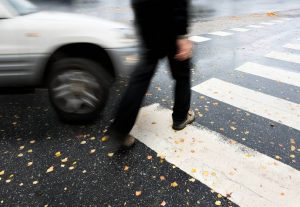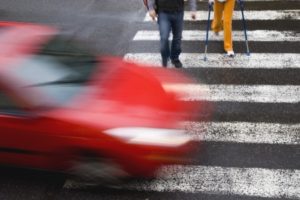If you or a loved one have fallen victim to a pedestrian accident, you need an experienced, knowledgeable Reading pedestrian accident lawyer with a proven success record. Pedestrian injuries can be devastating, taking a toll on victims and their families in regards to physical damages, therapy, change of routine/physical limits, loss of work, medical bills, and also in regards to the toll on victims’ emotional and mental well-being. At Munley Law, our Reading accident lawyers bring decades of experience handling pedestrian accident cases just like yours. We offer a free consultation, and if we don’t secure results, you owe us nothing. Our Reading pedestrian accident lawyers here to get the job done and ensure you receive the compensation you deserve.
If you were involved in a pedestrian accident in Reading, PA, don’t wait. Contact a Reading pedestrian accident attorney at Munley Law today to schedule a free consultation.
$32 Million Wrongful Death
$26 Million Truck Accident
$17.5 Million Car Accident
$12 Million Product Liability
$9 Million Truck Accident
$8 Million Truck Accident
$8 Million Truck Accident
$7.5 Million Auto Accident
$6.9 Million Garbage Truck Accident
$6.5 Million Traumatic Brain Injury
$5 Million Medical Malpractice
$5 Million Bus Accidents
How a Pedestrian Accident Attorney in Reading Can Help
Unfortunately, even the most careful pedestrians can encounter a careless or reckless driver, leading to a catastrophic injury that changes their lives. Serious injuries can lead to substantial medical expenses. Pedestrian accident injuries can cause you to have months of lost wages, doctor visits, and physical therapy in the future. You may be rightfully scared and confused about what to do about ever-increasing medical expenses, missing work for pain, or trips to the doctor.
Compensation and Legal Damages
Your personal injury lawyer in Reading can assist in recovering compensation for damages in two forms if warranted:
- Economic damages: Financial losses that include medical bills, lost wages, and property damage.
- Non-economic damages: Compensation for emotional distress, psychological distress, physical disfigurement, loss of enjoyment of life, and pain and suffering.
- Punitive damages: These can be recovered when drivers’ actions are proven to be intentional or reckless. Drunk driving incidents are often applicable here.
Your pedestrian injury lawyer in Reading has the resources and expertise to manage your case. Insurance companies want you to decide quickly and settle as soon as possible. After you have filed your police report, allow your personal injury lawyer to do the investigative reports and establish if there was negligence, specifically, that there was a breach of the driver’s duty to protect you. This is where eyewitness testimony, photos, and street cameras are all valuable evidence. Once established, the negotiating, informing, and finalizing can be conducted by your attorney so that you get the most out of your compensation.
Why Hire a Reading Pedestrian Accident Attorney?
Since 1959, individuals and families in Pennsylvania have turned to Munley Law for help when needed. In that time, we have established ourselves as experts in the legal industry and gone up against some of the country’s biggest transportation and insurance companies. You can rest assured that your case will be in the best possible hands, and we have the stats to prove it:
Getting into a car accident can be a frightening and devastating experience, significantly if you have been injured. If your loved one has been involved in a tragic auto accident, your primary focus may be comforting your family or being there for the injured victim, not hiring a car accident lawyer. At this time, thinking about recovering compensation from the insurance company may seem stressful and the last thing you need to be worried about.
At Munley Law, we know how a severe injury can leave you and your family financially vulnerable. We believe that cost should never stand in the way of justice. That’s why, regardless of how big or small, our Reading personal injury lawyers never collect a fee for our legal services unless we win your case. As our client, you will not pay anything from your pocket or any upfront costs. And our contingent fee (a portion of the settlement or verdict) will never exceed the amount paid to you. You owe us nothing if we cannot get you the compensation you need for your personal injury lawsuit. That’s our no-fee promise.
Pedestrian Rights in Reading, PA
A pedestrian travels on foot [or with a walking aid if handicapped or injured] along a road or in a developed area. Although pedestrians may cross streets at any point, there are responsibilities and Pennsylvania State Pedestrian Laws (Title 75) that must be taken into account, according to the Pennsylvania Department of Transportation (PennDOT):
- Traffic-control devices and regulations: Must be obeyed by pedestrians, including authorized person directing traffic
- Crosswalks and right-of-way: Pedestrians must use curbs and safe walkways, not making sudden movements into moving vehicles’ paths.
- Non-crosswalks and right-of-way: Other than within marked and unmarked crosswalks, pedestrians must yield the right-of-way to all vehicles upon the roadway.
- Crossings at pedestrian tunnels or overhead crossings: Pedestrians should yield the right-of-way to all vehicles upon the roadway crossing a roadway at a point where a pedestrian tunnel or overhead pedestrian crossing has been provided.
- Crossing between controlled intersections in urban areas: Pedestrians should cross only at marked intersections when adjacent intersections have traffic-control signals.
- Crossing intersection diagonally: Pedestrians should not cross an intersection diagonally unless authorized traffic-control devices are present or if regulated by a police officer or other authorized personnel.
- Walking along or on the highway: If a curb or safe walking space is present, it is against the law to walk on the adjacent roadway. If a sidewalk is not available: walk only on the shoulder to the practical roadway’s edge. If there is no shoulder or sidewalk available: walk near the practicable edge of the roadway; if there’s 2-way traffic, walk on the left side.
- Yield to emergency vehicles: Pedestrians must yield to emergency vehicles.
- Alcohol and controlled substances: Pedestrians should not walk or be on a highway if under the influence; they may use sidewalks.
- Soliciting on the roadway: Pedestrians should not solicit employment, business, guarded watching of vehicles, or rides.
- Bridges and railroad warnings: Bridge signals, gates, and barriers should be approached and refrained from as the signal indicates.
Violations of pedestrian laws can include fines, accidents, and immense stress. Responsibilities rest with pedestrians and drivers to monitor their behavior with care and precaution by adhering to Pennsylvania State traffic laws.
Common Causes of Pedestrian Accidents in Reading, PA
While drivers and pedestrians must remain alert and adhere to the rules of the road, driver negligence is a significant contributing factor in pedestrian accidents in Reading. Drivers are responsible for taking reasonable care and paying attention to their surroundings. Common causes of pedestrian crashes include:
Distracted driving
The top cause of the spike in pedestrian accident deaths is due to smartphone use. Drivers who take their eyes off the road to answer a text or scroll through social media are less likely to see a pedestrian in the roadway or intersection; small children (hard to see, at times) and the elderly (fragile, slower reflexes) are especially vulnerable.
Speeding
Maintaining speeds that are in line with designated guidelines can reduce damages and save lives. Pedestrians typically have a 90 percent chance of surviving if a car is moving 20 MPH; however, if the car is moving at 40 MPH, the pedestrian has just a 10 percent chance of surviving.
Disregarded traffic signals or laws
This can occur if a driver, pedestrian, or jogger disobeys traffic signals or laws that are set to establish order and protective traffic measures.
Aggressive driving
Some drivers fail to yield to pedestrians at a crosswalk or fail to wait until the pedestrian has fully exited the crosswalk before proceeding, causing an accident.
Driving under the influence of drugs or alcohol
Driving while under the influence of alcohol or drugs is irresponsible, and dangerous, and can cause license suspension, injuries, and death.
Driving when tired
Fatigue can cause drivers’ reaction time and focus to be compromised, and can also cause a driver to fall asleep at the wheel.
Failure to take into account environmental factors
Weather conditions can require that drivers adjust speed and extra care when making turns.
Crosswalk/road design
A city or municipality could be at fault if they commissioned and approved designs that put drivers and pedestrians at risk.
Distracted walking
Sometimes, pedestrians put themselves in harm’s way by texting while walking — not paying attention. Although the injury is a result of the pedestrian’s self-negligence, a motorist may still share some fault, as they succeeded in hitting a distracted walker.
How Often Do Pedestrian Accidents Occur in Reading, PA?
Pedestrian accidents are on the rise across the nation. According to a report on PBS, as of 2021, pedestrian accidents have peaked at the highest level they have been in 40 years, causing approximately 7,500 deaths, averaging 20 deaths a day. The National Safety Council (NSC) reported that in 2022, approximately 9,188 pedestrians died in traffic or non-traffic incidents.
Taking all of this into account, the New York Times has reported that crashes killing pedestrians have shown a 46 percent increase in the last decade. Safe practices are made, and laws are in place to advocate for safe roads for pedestrians and drivers alike, but accidents are persisting. The two groups the most vulnerable to dying in pedestrian accidents are:
- Adults over age 65, making up 20 percent of all pedestrian accident deaths.
- Children under age five, accounting for 20.4 percent of pedestrian accident deaths.
Pedestrians need more protection, and those who have been injured can benefit from the experienced legal representation of our Reading personal injury lawyers to recuperate and to get the compensation that they deserve.
Who Can Be Held Responsible for a Pedestrian Accident in Reading?
Third-party negligence can contribute to pedestrian accidents and injuries. There are various scenarios that can put the driver and the pedestrian and risk:
- An automobile manufacturer may have sold a vehicle (to the driver) with faulty parts, causing the vehicle to have a problem when braking.
- Commercial vehicle’s carrier and/or employer may be at fault for various reasons
- Enforcing driving schedules without adequate breaks taken
- Failing to hire and train drivers properly
- Failure to inspect the commercial properly when servicing it
- City or municipality negligence for poor road design
When Can the Pedestrian Share Fault for the Accident?
In pedestrian accidents, both drivers and pedestrians can share responsibility, especially when they’re distracted by their phones and not fully focused on their surroundings. This is extremely dangerous because a text-focused pedestrian can walk into things, walls, construction, a physically challenged person, and traffic. Pedestrians may be at-fault and partially responsible for a crash for any number of reasons, such as:
- Jaywalking
- Disregarding traffic signals
- Walking along non-pedestrian paths such as highways or in undesignated areas meant for traffic
- Failing to use sidewalks when they are available
- Not paying attention to traffic (texting, reading, engaging in a conversation with a friend, looking away from where they are moving to)
Should a distracted “texter” walk into traffic and be injured by a vehicle, the driver may be partially liable under Pennsylvania’s Negligence Law; this holds true only if the driver is at least 51 percent liable. In this scenario, the driver would be responsible for 51 percent or greater of the total expenses and compensation due to the injured (partially responsible) victim. “Pennsylvania’s negligence laws stipulate that damages be reduced in proportion to the claimant’s degree of fault, also referred to as comparative negligence.”
What to Do After a Reading Pedestrian Accident Injury
In Pennsylvania, if you’re injured in a pedestrian accident, you’ve got two years from the date of the accident to file a claim.
Statute of Limitations
This deadline is known as the statute of limitations. Miss it, and you’re likely out of luck when it comes to seeking compensation. While two years might seem like plenty of time, getting everything together for a strong case can take a lot longer than you’d expect. You’ll want time to investigate the accident, gather evidence, get the right experts involved, and understand the full impact of your injuries. Acting quickly gives you the best chance to secure the compensation you deserve.
It’s a smart move to reach out to an attorney as soon as possible after the accident because time can work against you here—memories fade, contact info can be lost, and evidence isn’t always around forever. Getting medical care right away is crucial, too, both for your health and to have a record of your injuries. The sooner you get a lawyer on board, the sooner they can start gathering what’s needed to support your case.
By taking these steps right after the accident, you give yourself the best shot at a successful claim within Pennsylvania’s two-year timeframe.
- Contact Emergency responders, or have someone else do so while you wait. Do the same for the police. Take pictures and notes if you can.
- Seek out eyewitnesses and get their contact information. This will be extremely valuable in your case.
- Fill out a police claim/report.
- Get insurance and contact information from the driver. Do not negotiate or make any statements. Contact your attorney.
- Do not apologize or do not make statements; contact a personal injury lawyer to make sure that all details are accounted for.
- Seek medical attention as soon as possible. Keep all bills.
You will want to take detailed notes and take photos, as the recovery from a pedestrian accident has many steps. Physical injuries can require that you change your lifestyle and routines and even receive help for your daily activities. Pedestrian common injuries include:
- Internal bleeding
- Broken ribs
- Head injuries such as concussion
- Shoulder displacement
- Vertebrae injuries
- Neck injuries
- Jaw Fractures
- Spinal cord injuries
- Skull damage
- Injuries leading to death
Immediate medical attention establishes that you were seen and that there is a paper trail. For extensive injuries, physical therapy may be needed as an adjusted lifestyle, depending on progressions and mobility. Your personal injury lawyer will get the process started so that you can plan on recovering compensation for:
- Direct medical costs related to injury caused by the accident (past, current, and future)
- Pain and suffering resulting from the accident
- Cost of mental health treatment for post-traumatic stress disorder
- Cost of physical therapy following an injury related to the accident
Loss of wages is often experienced, along with stress and overwhelming emotional and psychological trauma. Putting this on the shoulders of an experienced personal injury lawyer can afford you the time, space, and energy to heal, regroup, and center yourself.
What Are Some Safety Measures That a Pedestrian Can Practice?
In our busy everyday lives, it is easy to go on auto-pilot and disregard checking in with our surroundings as we move throughout our day. PennDOT highlights steps to keep yourself safe when you are a pedestrian:
- Increase your visibility when walking at night by carrying a flashlight and wearing reflective clothing, such as reflective vests.
- Cross streets at a designated crosswalk or intersection whenever possible.
- Walk on a sidewalk or path instead of the road. Walk on the shoulder and face traffic if a sidewalk or path is not available.
- Avoid using electronic devices like earbuds, which can cause distractions when you are walking.
- Avoid walking if you have been using alcohol or drugs, which can impair judgment and coordination.
In Pennsylvania, pedestrians have the right of way within a crosswalk or at an intersection, whether or not there is a traffic signal present. Although pedestrians are to yield the right of way to vehicles in places where there is no intersection or crosswalk, it is illegal for drivers to pass a vehicle that is stopped for a pedestrian in a crosswalk; the second driver may not see the pedestrian in the crosswalk and cause an accident. The Vehicle Code assists in prohibiting motorists from making moving and non-moving violations in Pennsylvania; reinforcement of any violations is met with a fine.
Contact a Reading Pedestrian Accident Lawyer
If you were involved in a pedestrian accident in Reading, PA, turn to a Reading pedestrian accident lawyer at Munley Law to schedule a free consultation. We have the experience, the knowledge, and the track record needed to get you the compensation that you deserve. Speak with our personal injury lawyer in Reading today. There is no fee unless we win your case.
Munley Law Personal Injury Attorneys
606 Court St.
Reading, PA 19601
(610) 831-4234












